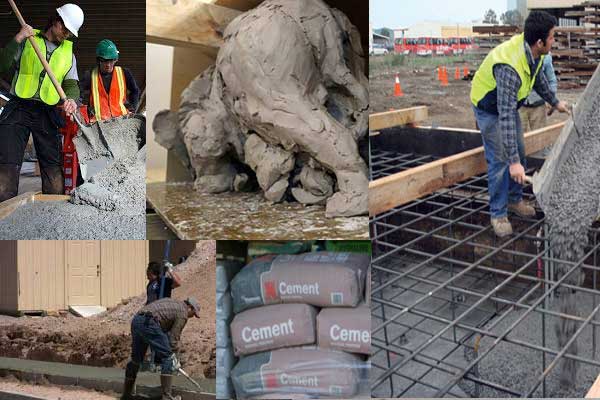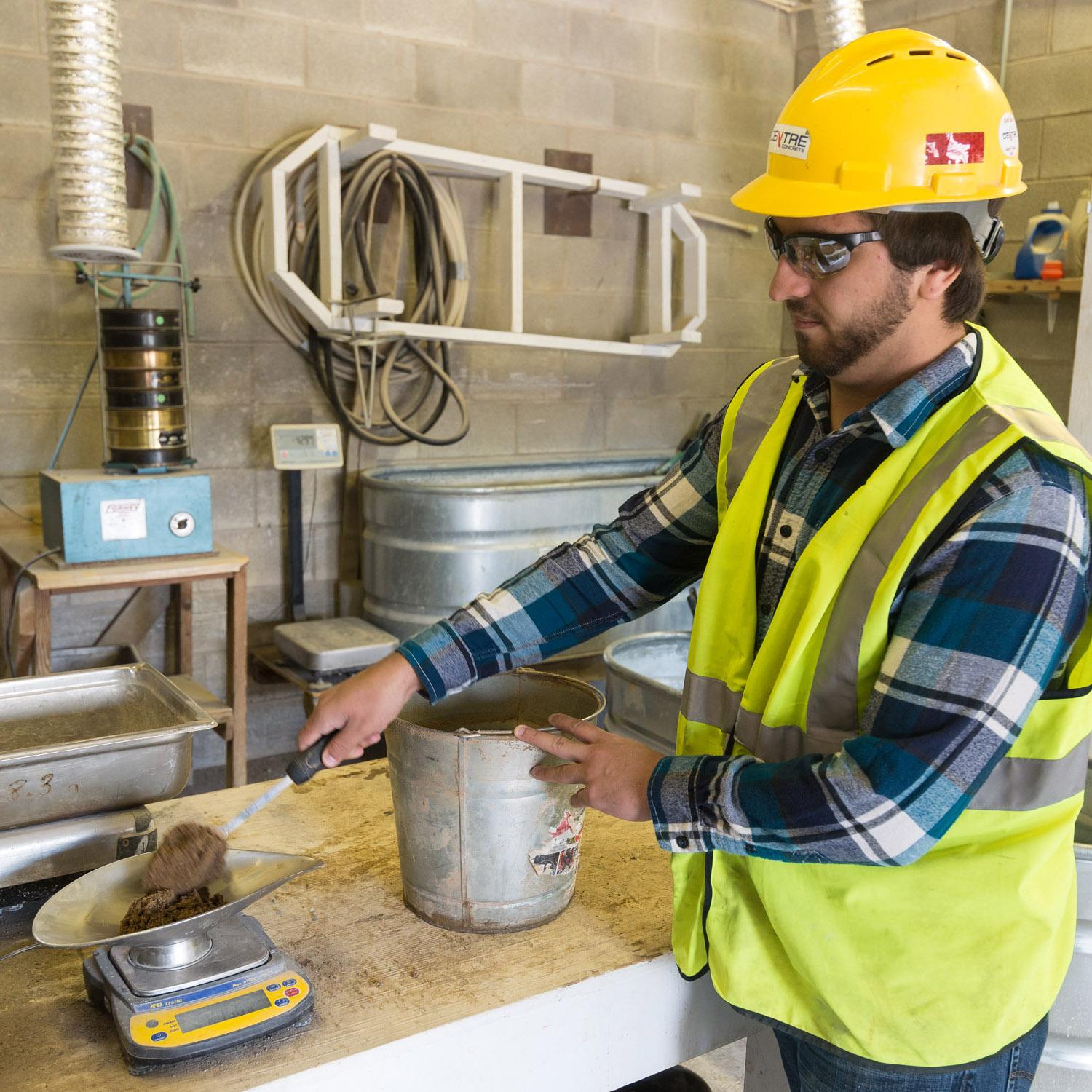How to Improve Your Project’s Lifespan with West Coast General Engineering industrial concrete
The Crucial Duty of Concrete Structure in Structural Integrity and Long Life
When it comes to constructing a residential property, the structure is more essential than you could believe. Concrete structures provide unparalleled strength and sturdiness, ensuring your framework can stand up to different environmental difficulties. Without a solid base, you run the risk of possible issues like changing or splitting, which can compromise security and value. Recognizing the subtleties of concrete foundations can be the key to preserving your financial investment for years to find. What should you take into consideration following?
Recognizing the Value of Concrete Foundations
Concrete structures are crucial to the total security of any structure, as they supply the essential assistance needed to hold up against numerous lots and ecological problems. When you consider developing a home or a commercial space, the structure is the first point you must think about. It functions as an obstacle against moisture, securing your residential property from water damage. A well-placed concrete foundation also stops settling and shifting, which can lead to splits in walls and floors. You'll intend to guarantee that the structure is effectively created and enhanced, as this impacts the long life of your building. Furthermore, a strong foundation can improve energy effectiveness by reducing air leaks. Bear in mind, disregarding the value of a concrete foundation can bring about costly repairs down the line. Investing in a top quality foundation upfront is important for the honesty and toughness of your structure.
Advantages of Concrete Structures for Structural Honesty
While many variables contribute to a structure's structural stability, concrete foundations supply unmatched sturdiness and strength. You'll value that concrete can stand up to extreme climate conditions, resisting both moisture and temperature level changes. This durability means your framework is much less likely to experience fracturing or changing with time, which can compromise its safety.Additionally, concrete's integral weight gives a strong base, stopping motion throughout all-natural events like quakes or floodings. When you select a concrete foundation, you're likewise deciding for low upkeep; unlike timber, it won't rot or draw in parasites, saving you money and time in repairs.Moreover, concrete's fire resistance provides added safety and security, ensuring your structure can endure heats without substantial damage. Generally, investing in a concrete foundation means you're prioritizing the long-term security and integrity of your structure, making it a smart selection for any construction project.
Common Sorts Of Concrete Foundations
When it concerns constructing foundations, recognizing the common kinds of concrete structures can help you make informed choices for your project. The most widespread types consist of slab-on-grade, crawl area, and full basement foundations.A slab-on-grade structure is a basic, cost-effective option, where a thick concrete piece is put directly on the ground. This kind functions well in warm climates, as it minimizes warm loss.Crawl space structures raise the home slightly over ground, enabling air flow and access to pipes and electric systems. This design can assist stop wetness issues.Full basement foundations use additional living or storage area while supplying superb architectural support. They need even more excavation and are normally used in chillier environments to avoid frost heave.
Factors to Consider When Creating a Concrete Foundation

Finest Practices for Putting Up Concrete Foundations
When you're installing a concrete structure, appropriate website preparation is important to guarantee stability (West Coast General Engineering industrial concrete). You'll additionally require to understand support techniques to enhance stamina and durability. Do not forget the healing procedure, as it plays a fundamental role in achieving a solid foundation.
Website Prep Work Relevance
It might seem uncomplicated, appropriate site prep work is vital for guaranteeing a solid and long lasting concrete foundation. Beginning by removing the area of any kind of debris, vegetation, or natural material that could endanger the foundation's integrity. Next off, evaluate the dirt type and compaction; you could need to dig deep into or add products to produce a stable base. Degree the ground to assure also weight circulation and prevent resolving concerns later. Installing appropriate drainage systems is likewise important to avoid water build-up, which can weaken the foundation in time. Ultimately, define the foundation's measurements precisely to guide the pouring procedure. By complying with these actions, you'll set the stage for an effective concrete foundation that stands the test of time.
Support Techniques Described
As soon as the site is appropriately prepared, the following step in ensuring a durable concrete structure entails executing efficient support techniques. You ought to begin by making use of steel rebar, which provides tensile stamina and aids avoid splitting. Lay the rebar in a grid pattern, ensuring it's elevated utilizing spacers to preserve correct insurance coverage. Additionally, consider utilizing cable mesh for extra support, particularly in locations based on hefty tons. Do not neglect to link the rebar intersections securely with cable. For bigger structures, fiber support can boost durability, decreasing the danger of shrinking fractures. Always comply with neighborhood building regulations and standards to make certain conformity. By using these support methods, you'll considerably improve your structure's stamina and durability, laying a strong foundation for your framework.
Treating Process Essentials
To guarantee your concrete structure treatments appropriately, it's crucial to preserve sufficient dampness and temperature level conditions instantly after pouring. Start by covering the surface area with a wet burlap or plastic sheeting to preserve wetness. This maintains the concrete moisturized, stopping cracks and ensuring toughness. You must also keep track of the temperature; ideal healing conditions are in between 50 ° F and 90 ° F. If it's as well hot, haze the surface frequently to avoid quick dissipation. For winter, think about utilizing protecting blankets to preserve warmth. Purpose for a treating duration of a minimum of seven days, as this is crucial for optimal strength growth. By complying with these best methods, you'll enhance your structure's resilience and long life, guaranteeing architectural integrity for several years ahead.
Maintenance of Concrete Structures for Longevity
To maintain your concrete foundation strong and long-term, regular assessments are important. You must also guarantee efficient water drainage services remain in place to avoid water damages. If you spot any type of splits, addressing them promptly will save you from larger troubles down the line.

Normal Assessments and Evaluations
While regular assessments and evaluations may appear like a job, they're crucial for keeping the stability of your concrete foundation. By consistently inspecting for cracks, changes, or indications of wear, you can capture prospective issues prior to they intensify into pricey repair work. Look for any kind of water pooling around the structure or uncommon settling, as these can signal underlying problems. It's additionally a good idea to monitor any kind of modifications in your house's framework, like doors that stick or home windows that don't open efficiently. Maintaining a document of your examinations assists track adjustments over time, permitting aggressive maintenance. Eventually, these analyses guarantee your foundation stays secure, supporting the durability and safety of your whole framework. Don't ignore this important aspect of homeownership!
Efficient Drainage Solutions
Routine evaluations pop over to this web-site can reveal issues like water drainage issues that may endanger your concrete foundation's stability. To avoid water accumulation, ensure your gutters and downspouts direct water far from the foundation. Installing French drains pipes can efficiently redirect surface area and groundwater, reducing stress on your structure walls. Furthermore, rating the dirt around your home helps ensure that water moves away, instead of pooling near your foundation.Consider using sump pumps in locations prone to flooding, as they actively eliminate excess water. Consistently look for blockages in drain systems and clear them without delay. You'll protect your foundation's integrity and durability by taking these aggressive measures. Remember, reliable drainage services are necessary for keeping a solid, sturdy concrete structure.
Motivate Fracture Fixes
When you see splits in your concrete structure, resolving them immediately is crucial for keeping its long life. Tiny splits can promptly advance right into bigger problems, jeopardizing the structural stability of your home. Frequently examine your foundation for signs of damages, such as straight or upright fractures. If you published here spot any, do not wait-- fix them immediately. You can make use of epoxy shots or concrete patching compounds, which work for sealing splits. Constantly comply with the manufacturer's guidelines and take into consideration consulting a specialist for considerable damage. Bear in mind, prompt repair work not only boost your foundation's sturdiness but additionally save you cash in the future by avoiding more considerable repair services down the line. Stay aggressive, and your foundation will stay strong and safe and secure.
Dealing With Usual Problems With Concrete Foundations
Concrete structures can encounter different problems with time, making it critical to determine and address them immediately. One of the most usual issues is fracturing, which can take place because of temperature fluctuations or working out soil. If you see cracks, it's important to evaluate their dimension and deepness; small splits can often be secured, while bigger ones may need expert evaluation.Water breach is another major problem. Excess moisture can result in mold and mildew growth and structural damage. Warranty correct drain around your structure to mitigate this danger. Furthermore, seek signs of moving or bowing wall surfaces, as this can indicate underlying concerns with your foundation's stability.Regular examinations are basic to capture these troubles early. If you identify any type of worrying indications, don't be reluctant to seek advice from a structure expert. By staying positive, you can maintain the honesty and longevity of your concrete structure, assuring your home remains risk-free and protected.
Regularly Asked Questions
Just How Does Soil Kind Affect Concrete Structure Efficiency?
Dirt type significantly impacts concrete structure performance. If you have actually got extensive clay, for example, it can cause moving and fracturing. Sandy dirt may cause resolving. Recognizing your dirt helps ensure a steady foundation.
Can Concrete Foundations Be Repaired if Damaged?
Yes, you can repair damaged concrete structures. Depending on the extent of the damage, techniques like epoxy injection or piece jacking can bring back security. It's ideal to seek advice from a professional for reliable services.
What Is the Regular Life Expectancy of a Concrete Foundation?
A concrete foundation generally lasts 30 to 100 years, depending upon variables like dirt problems, environment, and upkeep. go to this website You'll intend to watch on it to guarantee it remains healthy throughout its life-span.
Exist Choice Products to Concrete for Foundations?
Yes, there are alternatives to concrete for foundations, like steel, lumber, and even recycled products. Each choice has distinct benefits and disadvantages, so you must consider your project's certain requirements when selecting the best product.
How Does Environment Influence Concrete Foundation Resilience?
Climate considerably affects concrete structure longevity (Concrete Contractors Rancho Cucamonga). Severe temperatures, dampness, and freeze-thaw cycles can damage the product, resulting in splits and structural problems. You need to take into consideration local climate problems when intending your foundation to assure lasting efficiency